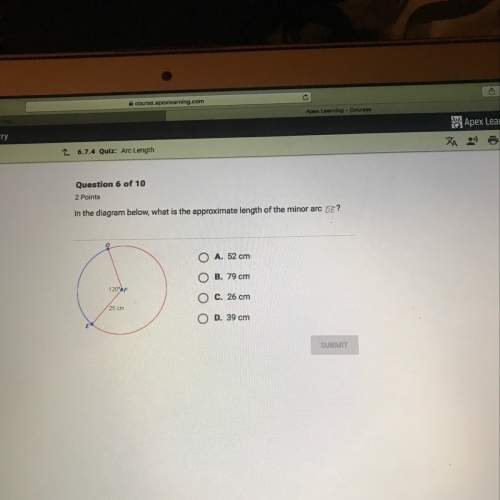
Mathematics, 16.10.2020 08:01 blakeolson0800
The function h(x) is given below.
h(x) = {(3, –5), (5, –7), (6, –9), (10, –12), (12, –16)}
Which of the following gives h–1(x)?
{(3, 5), (5, 7), (6, 9), (10, 12), (12, 16)}
{(–5, 3), (–7, 5), (–9, 6), (–12, 10), (–16, 12)}
{(3, –5), (5, –7), (6, –9), (10, –12), (12, –16)}
{(5, 3), (7, 5), (9, 6), (12, 10), (16, 12)}

Answers: 2
Another question on Mathematics

Mathematics, 20.06.2019 18:02
Annie walked her dog 2 1/4 miles from her house to the dog park and 3/7/8 miles around the park.then she walked the same distance home.how many miles did she walk in all?
Answers: 1


Mathematics, 21.06.2019 21:00
If u good at math hit me up on insta or sum @basic_jaiden or @ and
Answers: 1

Mathematics, 21.06.2019 23:00
What is the location of point g, which partitions the directed line segment from d to f into a 5: 4 ratio? –1 0 2 3
Answers: 1
You know the right answer?
The function h(x) is given below.
h(x) = {(3, –5), (5, –7), (6, –9), (10, –12), (12, –16)}
Questions

Business, 20.07.2019 22:40


Physics, 20.07.2019 22:40

English, 20.07.2019 22:40

History, 20.07.2019 22:40


English, 20.07.2019 22:40



World Languages, 20.07.2019 22:40


History, 20.07.2019 22:40

History, 20.07.2019 22:40



Biology, 20.07.2019 22:50


Mathematics, 20.07.2019 22:50

Business, 20.07.2019 22:50

Social Studies, 20.07.2019 22:50




